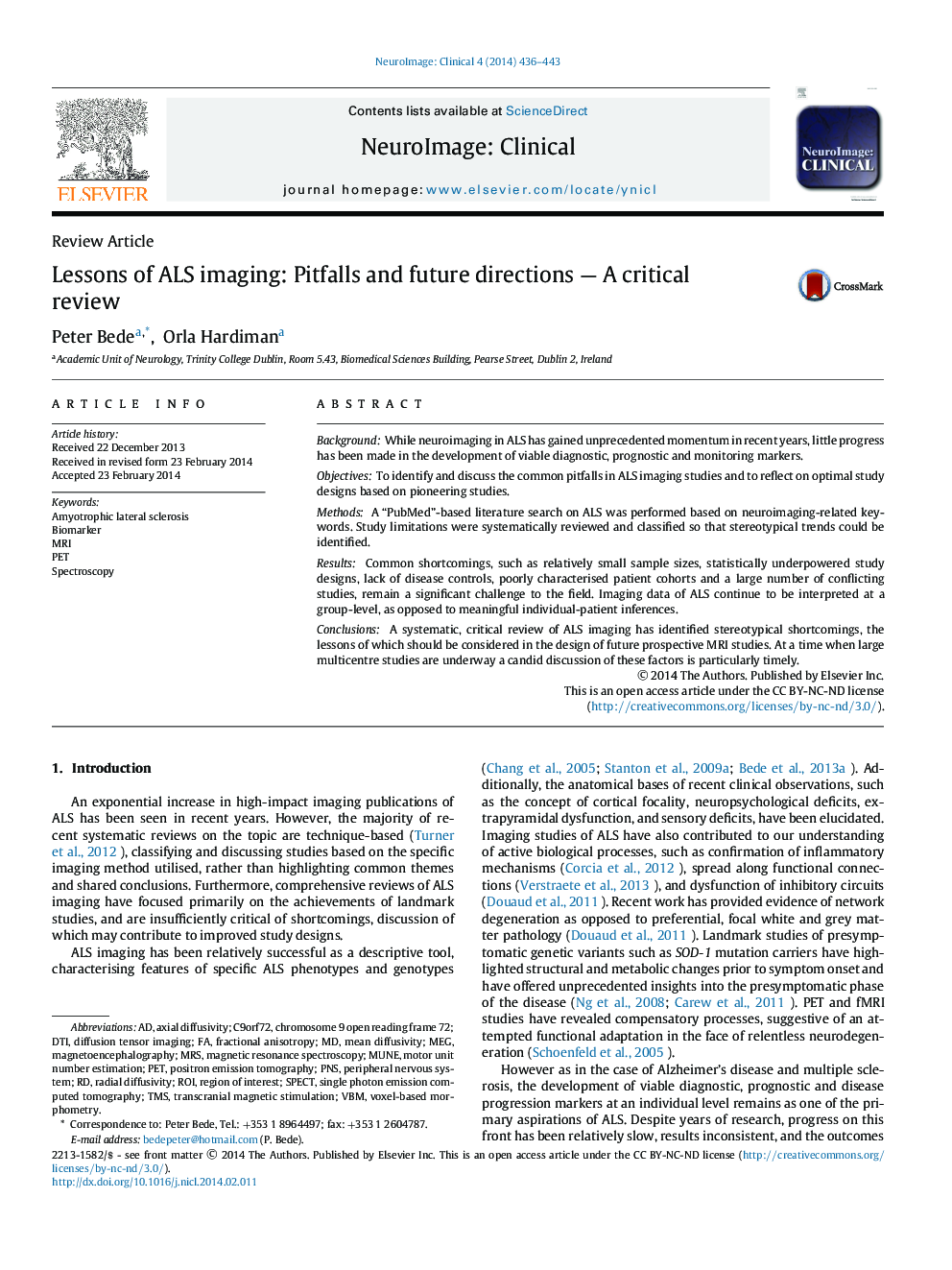| Article ID | Journal | Published Year | Pages | File Type |
|---|---|---|---|---|
| 3075280 | NeuroImage: Clinical | 2014 | 8 Pages |
•Stereotypical shortcomings can be identified in ALS neuroimaging studies.•A systematic discussion of ALS study limitations is particularly timely.•Individual patient data meta-analyses and multicentre studies are urgently required.•The gaps identified in ALS imaging indicate exciting research opportunities.
BackgroundWhile neuroimaging in ALS has gained unprecedented momentum in recent years, little progress has been made in the development of viable diagnostic, prognostic and monitoring markers.ObjectivesTo identify and discuss the common pitfalls in ALS imaging studies and to reflect on optimal study designs based on pioneering studies.MethodsA “PubMed”-based literature search on ALS was performed based on neuroimaging-related keywords. Study limitations were systematically reviewed and classified so that stereotypical trends could be identified.ResultsCommon shortcomings, such as relatively small sample sizes, statistically underpowered study designs, lack of disease controls, poorly characterised patient cohorts and a large number of conflicting studies, remain a significant challenge to the field. Imaging data of ALS continue to be interpreted at a group-level, as opposed to meaningful individual-patient inferences.ConclusionsA systematic, critical review of ALS imaging has identified stereotypical shortcomings, the lessons of which should be considered in the design of future prospective MRI studies. At a time when large multicentre studies are underway a candid discussion of these factors is particularly timely.
